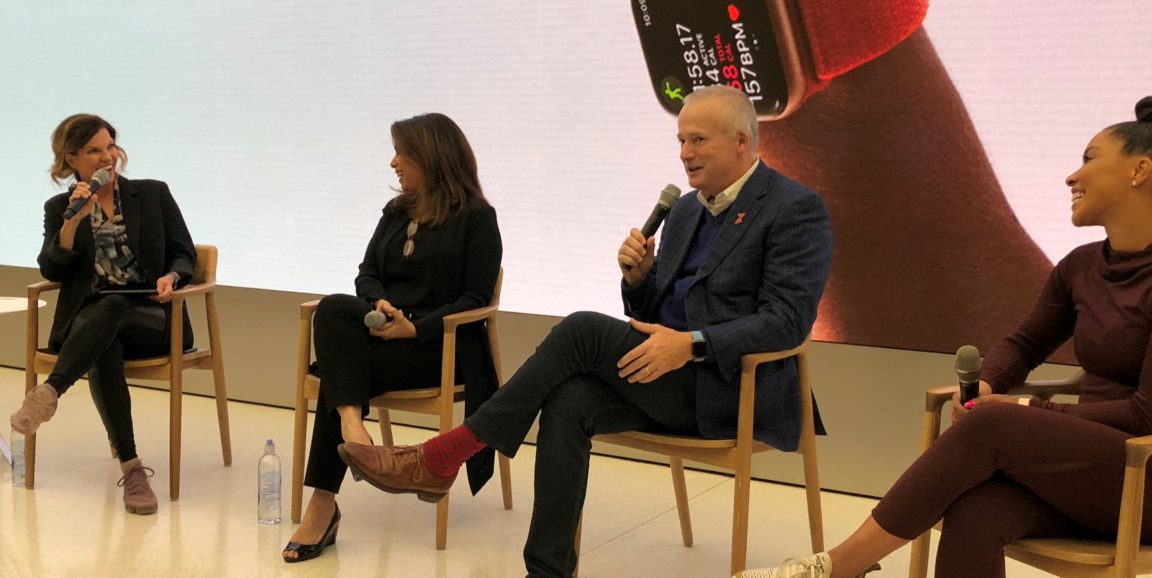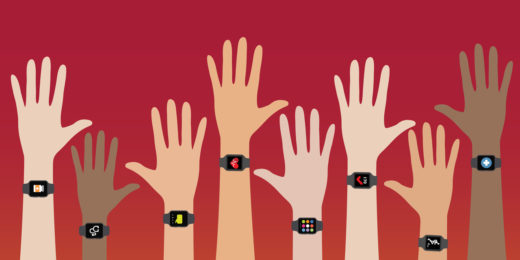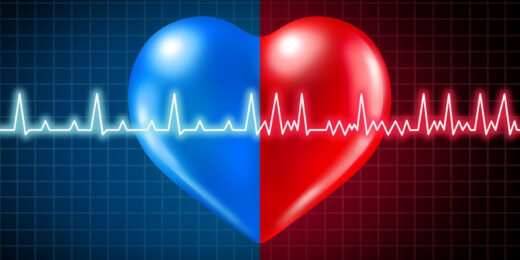If you happened to have dropped by the Apple Store in downtown San Francisco Monday evening, you might have caught sight of something out of the ordinary. Under the direction of an enthusiastic woman with a tight bun in her hair and a huge smile, dozens of people on the second floor of the bright, airy store suddenly stood up and began squatting and marching - and two people even hit the floor to demonstrate a push up and plank.
The crowd was there for a free special program called Heart Health with Apple, and long-time celebrity trainer Jeanette Jenkins had encouraged attendees to try a few moves. She was part of a panel of health, tech and fitness experts brought together to discuss heart health, share practical tips and describe how the Apple Watch is being used to shed light on heart disease.
Before the audience was prompted out of their seats by Jenkins, panel moderator Julz Arney, with Apple Fitness Technologies, posed some important questions to the experts at hand. Bob Harrington, MD, a Stanford cardiologist and president-elect of the American Heart Association, took the mic first to remind the audience that heart disease is the number one killer in the world and explain there’s a growing awareness of the seriousness of the problem, especially among women. He also noted that an increasing number of patients have come to him over the years with their own health data - something he says empowers patients and “allows physicians to partner with them.”
Much of that data comes from wearables, and Harrington and fellow panelist Sumbul Desai, MD, a practicing physician at Stanford and VP of Health at Apple, spent a chunk of time at the event discussing the data being captured through the Apple Heart Study. That study, which was launched by Stanford in collaboration with the company last year, is exploring whether an app on the Apple Watch that analyzes pulse rate data can identify a potentially deadly heart disease called atrial fibrillation.
The Apple Heart Study is the largest study ever done on the disease - which is characterized by an irregular heartbeat and can increase the risk of stroke and heart failure - with more than 400,000 participants enrolled. “I’ve been doing clinical trials for 30 years, and having 5,000 participants is considered a big study,” said Harrington in explaining the scope of this research. The ability for researchers to reach this many people, he said, shows “the power of new technology.”
The researchers hope to glean much information from the study, including, Harrington said, details on how often atrial fibrillation occurred among this population and how exactly study participants and their physicians used the technology. For example, did participants who received an irregular pulse notification on their watch go on to seek medical attention?
The study is in its final phase of data collection, and initial results will be released at the American College of Cardiology conference in New Orleans next month. Desai, for one, is excited. “I went to medical school to make an impact,” she said. “And to be able to do this at scale” is rewarding.
Before ending their session, Arney and the panelists made the point of encouraging attendees to tend to their hearts and overall health well before there’s a problem. Harrington shared the AHA’s recommendation of walking for 30 minutes a day for five days a week, and Jenkins offered “practical and tactical tips” for the audience: Add exercise to your to-do list on a weekly basis; choose a work-out program that can easily be done, even in your living room; and, if you’re a parent, involve your kids. Desai’s advice was even simpler: “Just move.”
Photo by Michelle Brandt






